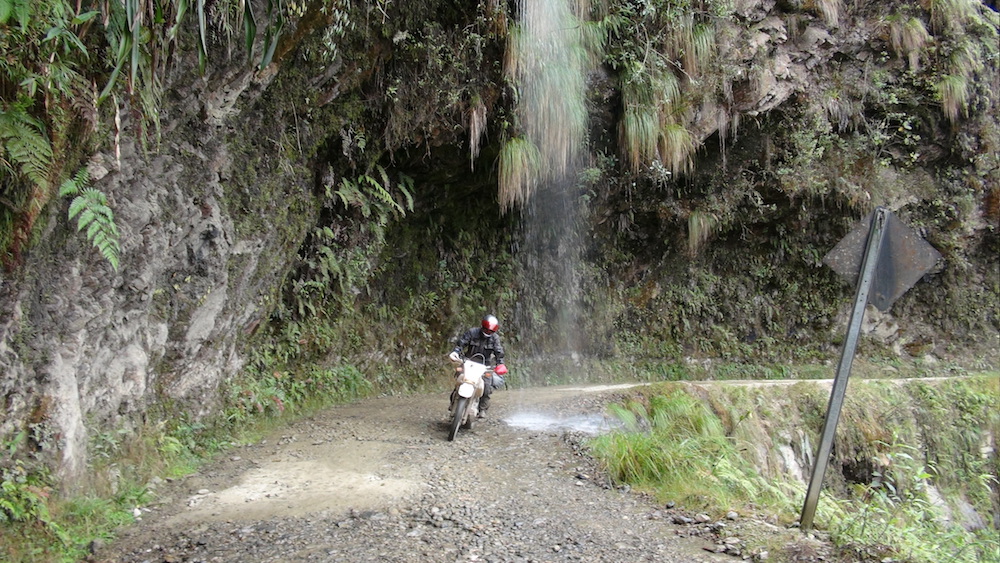This is the 4th and final installation of Phil’s trip diary. Catch up now:
Read Part 1 | Read Part 2 | Read Part 3
Go learn more about our Bolivia Road of Death Adventure
Tuesday, November 15th — Oruro to Quime
We started the morning with a jolt. Not from coffee, but from the hectic buzz of traffic the busy streets of Oruro threw at us. Buses belching smoke, honking transit and legions of taxis all crowded around us as we experienced our own “running of the bulls” out of Oruro.
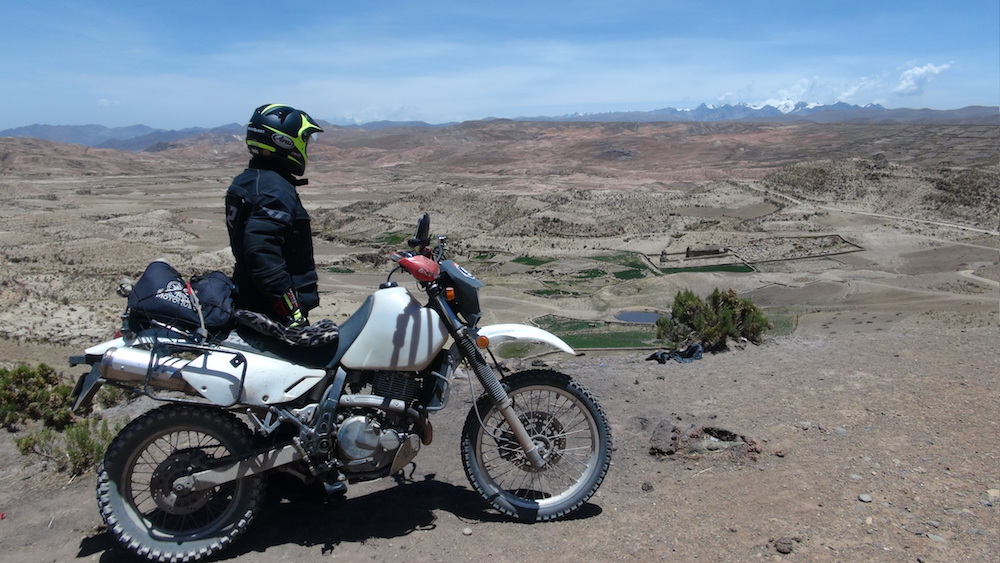
Once on the outskirts of the city, the flat, straight paved highway beckoned us to open up the throttle, relax and let the mountains come to us. We had purchased picnic supplies and the plan was to stop along the way somewhere to have an informal lunch.
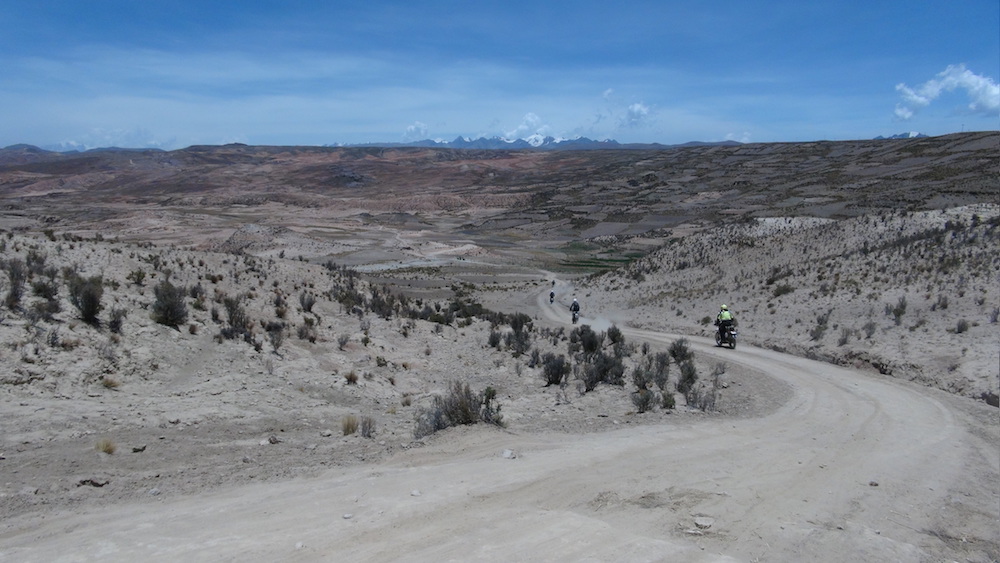
After about 2 hours of riding, tall, glaciated peaks presented themselves and I could only think to myself that we were finally entering the majestic Bolivia that I had always heard about.
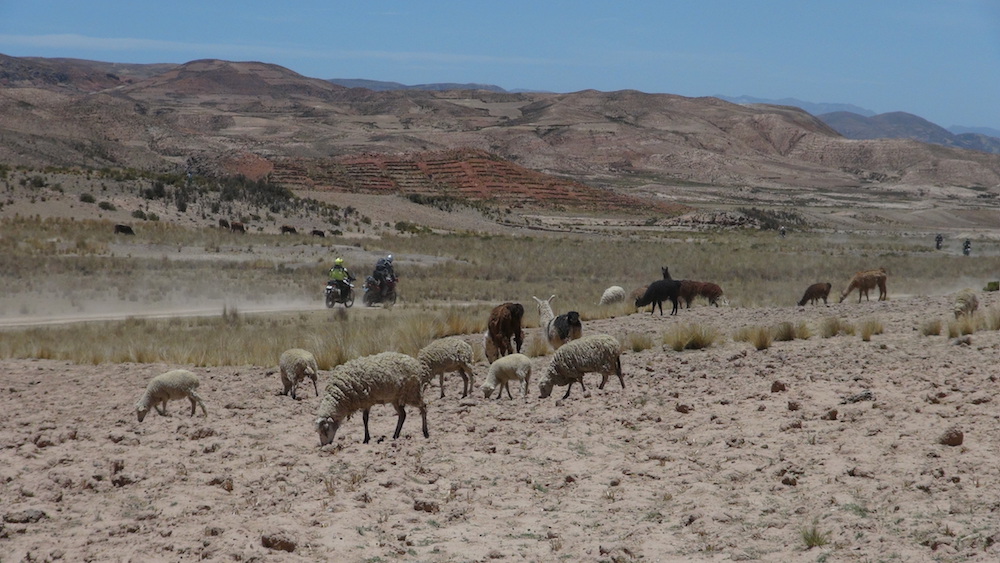
In a small village we turned off to explore a dirt road Cory had known about. This high pastoral scene with its patchwork of dry farm plots, grazing sheep and llamas, all under the watchful eye of brilliant, white glaciers high above, was remarkable.
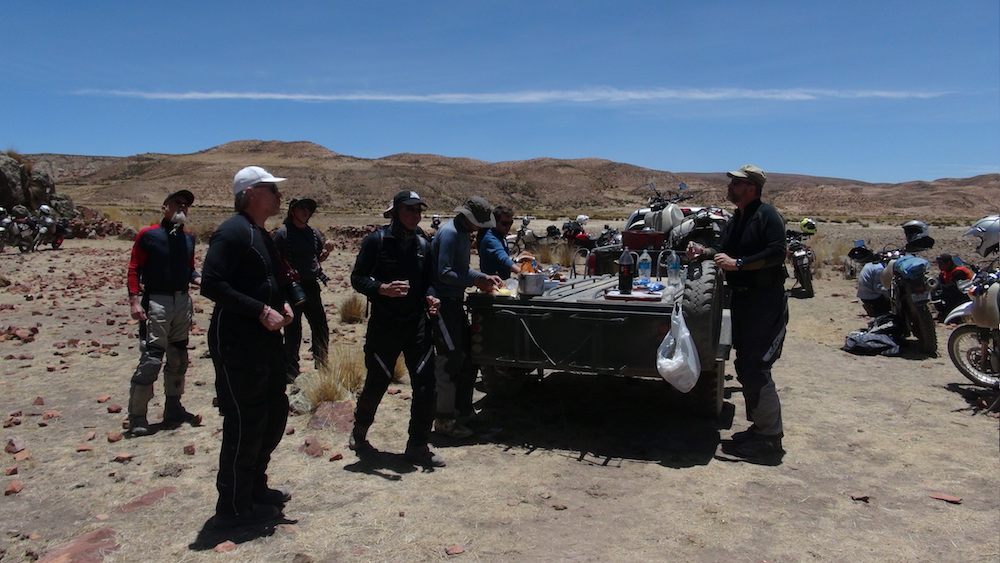
We explored a dirt road that wound through this scene, past a herd of sheep, several farm plots and through a sandy wash to a point where the road would go no further. There, next to a rock outcrop and some rock constructed corrals, we set up a buffet-style tortilla making station complete with sun dried tomatoes, salsa and assorted nuts, olives and fruits. At 12,000 feet, the sun was both hot and cool somehow, but you could perceive its power at this high attitude.
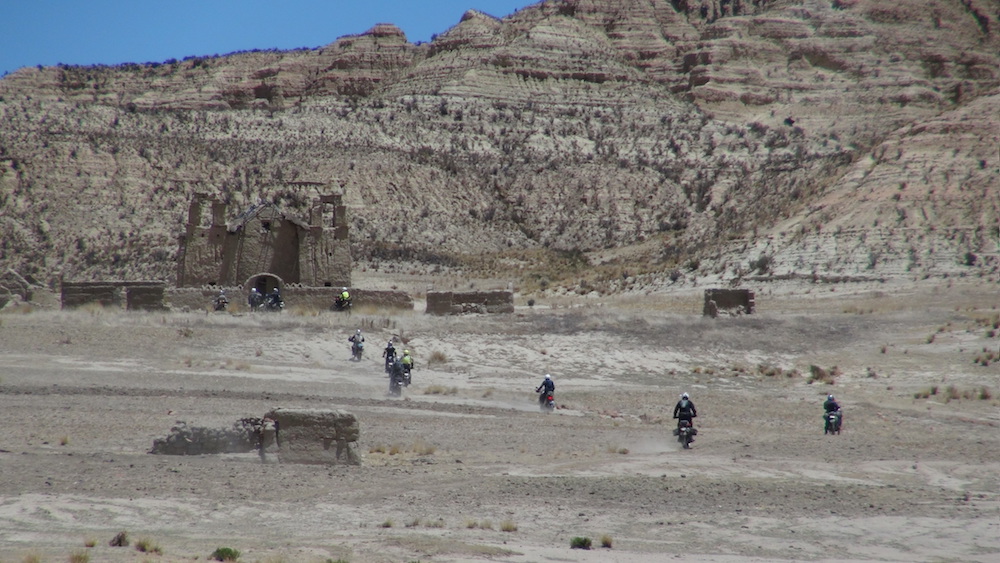
After lunch, we drifted back to the main highway but took one more sojourn towards a cluster of buildings. It was an abandoned church, something out of a timeless movie set or archaeologist’s diary.
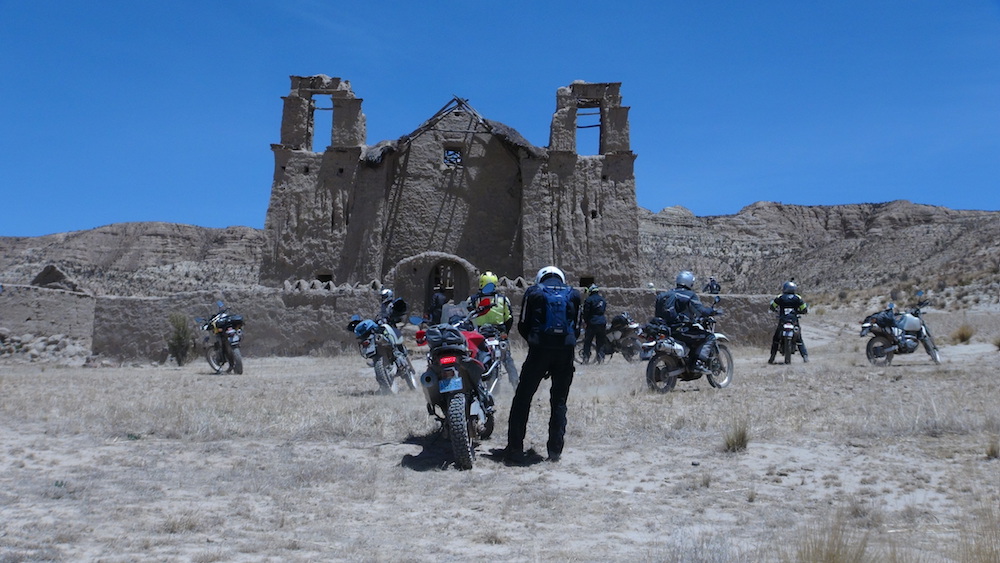
The main building was severely dilapidated with a caved in roof. The outlying buildings were in similar disrepair. No one was in sight. This place was completely deserted and only sparked the imagination. Who built the church? When was it constructed? Why was it abandoned?
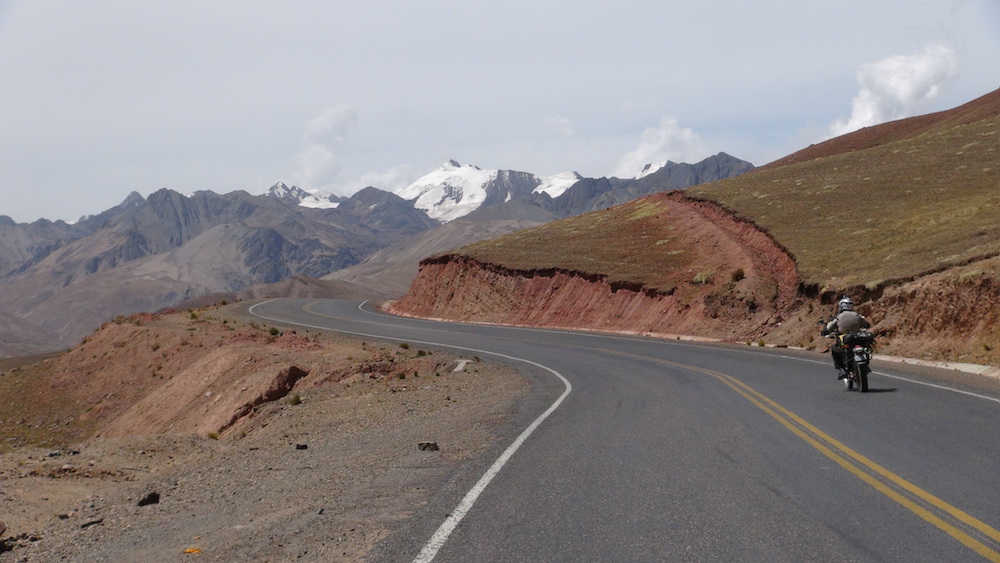
Back out on the highway we started an aggressive climb. This would be the highest point of the entire trip and after 30 minutes of zigzagging up and up and up, we arrived at the crest of the pass at 15,000 feet. There was a side road that branched off further and Leo and Walter went to explore. I soon followed.
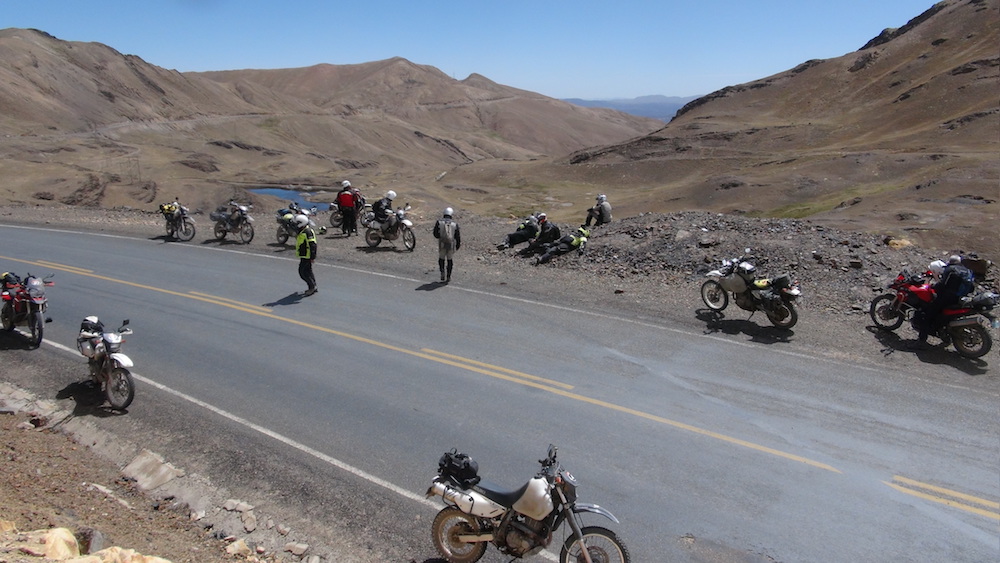
When met them on the way down and they reported a mine high up the side of the nearest mountain. We followed the rugged road to the highest point, stopped the engines and looked around. We were at 16,000 feet, surrounded by the majesty of the Andes. Tall peaks were everywhere, some with small, clinging glaciers. It was difficult to draw a breath.
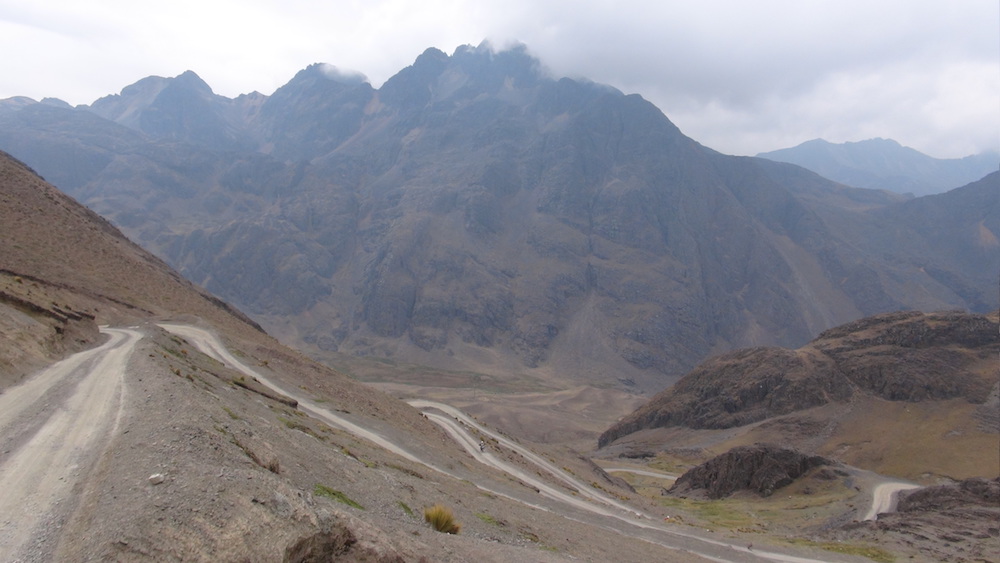
On the way down the other side of the pass, the paved road wound its way down, down, down. The road unraveled, cascading down the steep Andes slopes. We lost thousands of feet in a matter of minutes. High above, many side roads could be spotted and a couple of the riders commented that they could spend days here, exploring the area on smaller dirt bikes.
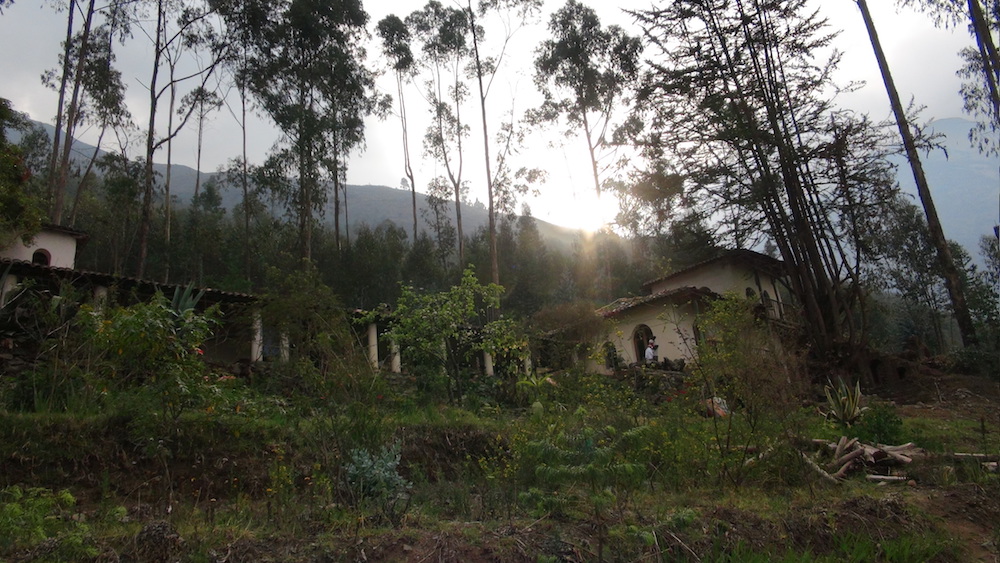
We pulled into our accommodations in the small town of Quime a couple of hours before sunset. Our resting place was not the 4 star affair that some of our tours offer. Rather, it was a cluster of comfortable rooms in two main buildings cut out of the side of a steep slope, lined with Eucalyptus trees and featuring a broad view of the town of Quime and surrounding mountains. At 10,000 feet, we all needed to catch our breath just to get up the stairs from the small dirt road that accessed it.
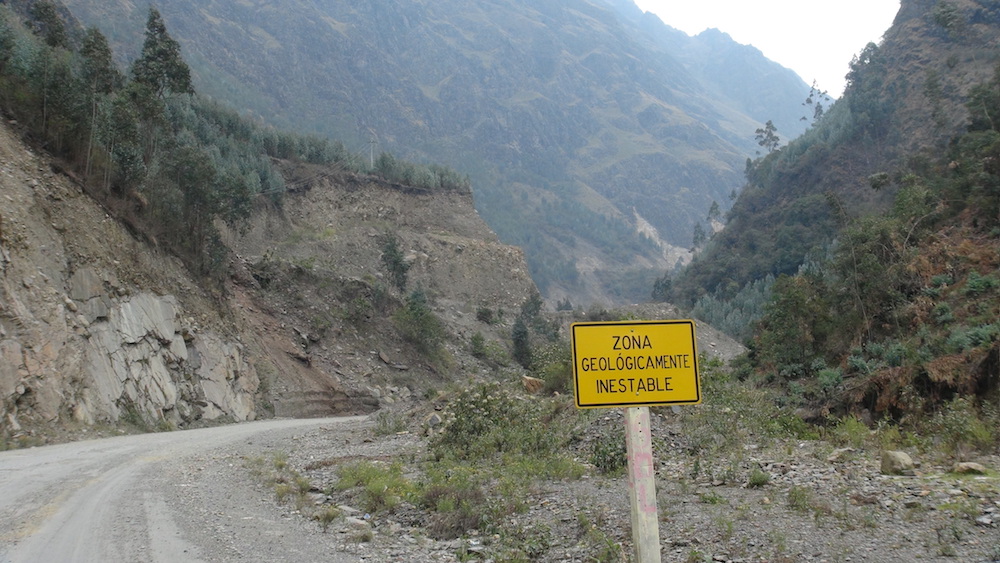
There were no signs on the road advertising this place. There were cats and dogs on the property, playing and sleeping. There was an informal kitchen where meals were prepared and where we ate. The patio was the most remarkable place, where the group could lounge and still enjoy a world class view. There was just one shower, where the group took turns cleaning up and just one outhouse. We were really off the beaten track and although the amenities were far from being high class, the food, hospitality, and views were as good as it gets.
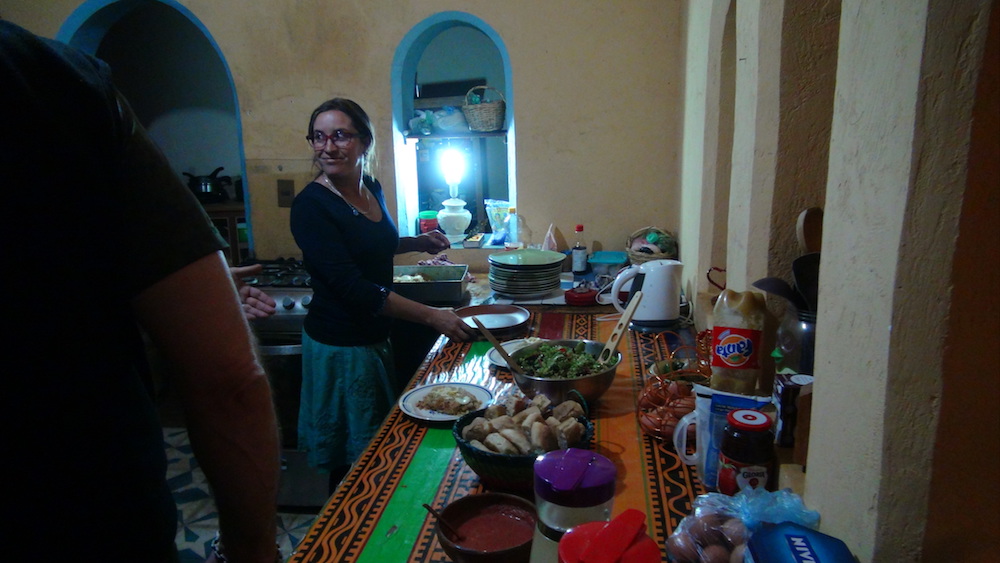
Bolivia by no means satisfies a high level of expectations when it comes to accommodations, and there is a galaxy of wiggle room for complaints, but we found, so far, the further we got off the beaten path, the more endearing the experience was. I suppose you have to be the kind of person that is ok with a few inconveniences in order to enjoy a more rustic, real experience. Fortunately, our group was made of that fabric, and we all settled in and thoroughly enjoyed our Quime time.
Wednesday, November 16th — Quime to Chulumani
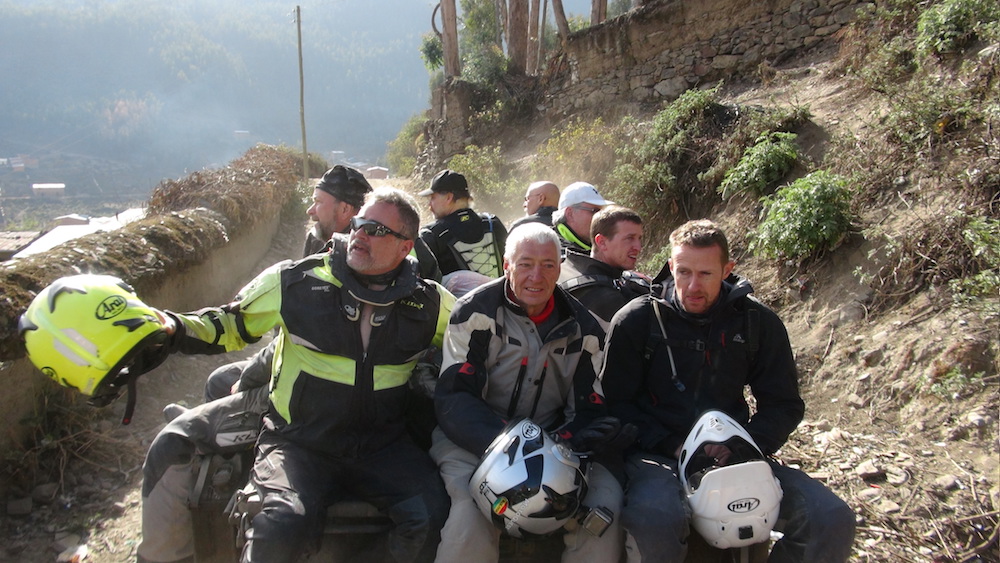
Cory told us that although today’s ride was only 180 kilometers, it would take all day for us on a dusty, dirt road. As anyone who has ridden in the mountains in a third world country knows, the distance between two points is not measured in kilometers, but hours. And, as we started our descent around the first few curves it was suddenly understood why we got an early start. This would be an all day affair.
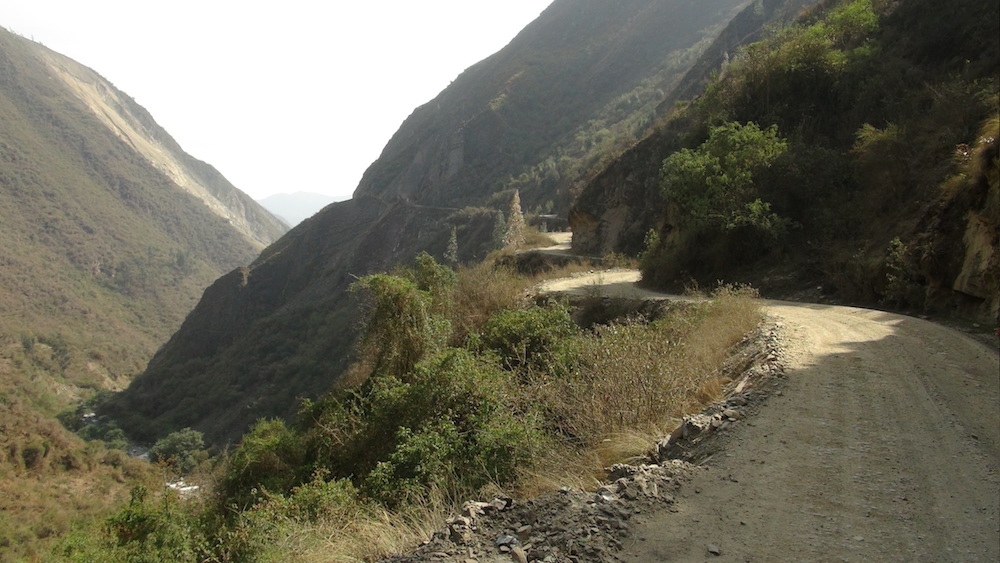
The road was a long noodle of spaghetti, curling itself over the landscape. Up and down steep valleys it went. Hundreds of curves, dozens of cliffs, many rivers…and the road went on and on.
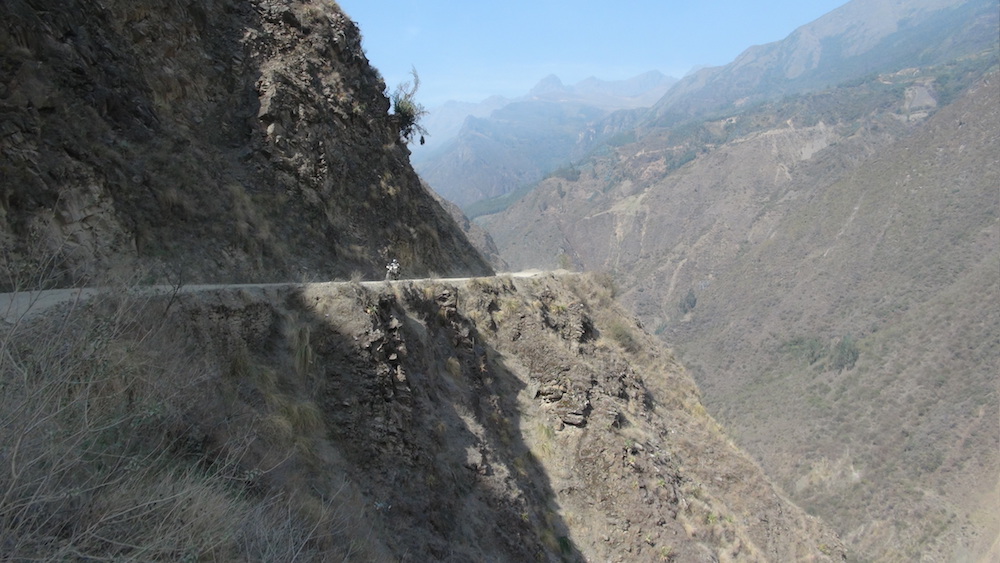
Steep valleys came and went. Dust was everywhere and soaked us throughout the day. Fires burned everywhere, enshrouding us with smoke. Smoke and dust, smoke and dust. At the bottom of the valleys the temperature skyrocketed. At the tops of the valleys smoke overwhelmed us. The landscape was a maze of tall ridges, leading this way and that and into infinity.
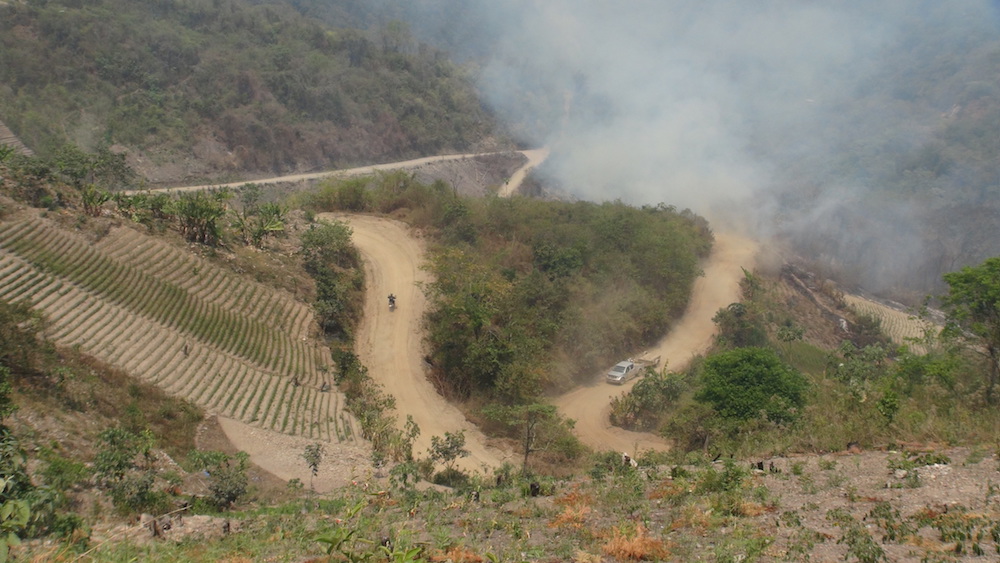
It was a hard day and between the heat, smoke, dust and traffic, we were all spent by the time the sun went down. The group had spread out with riders arriving a full 2 hours after the first ones arrived at the hotel. We had a couple tires go flat and a couple of riders overshoot the destination but we all made it, safe and sound to the pool side we were promised.
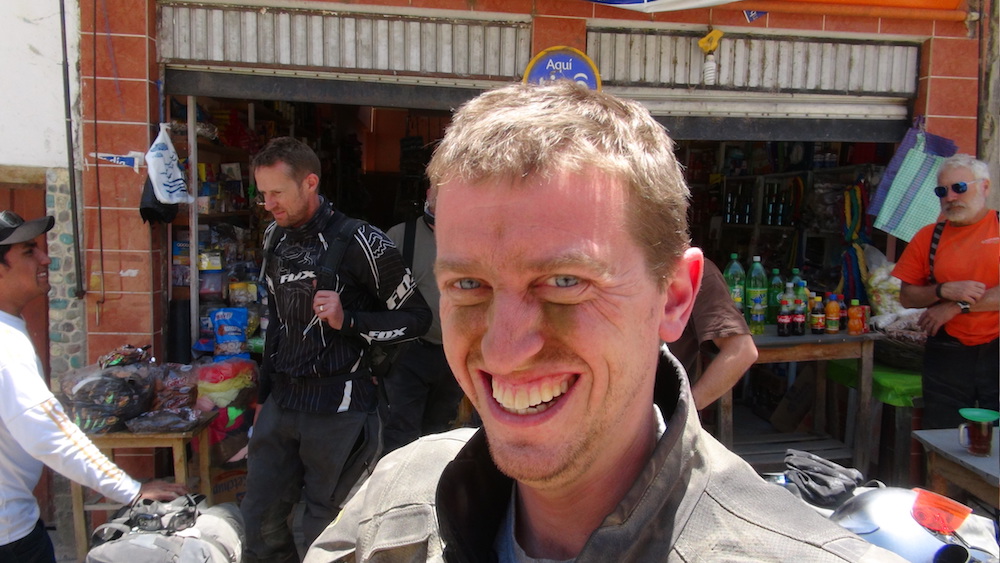
There really was no way around this long, long day and it had taxed some of us. Bolivia is not for the feint of heart. This was a true adventure, and we were in the middle of it.
Thursday, November 17th – Chulumani to Coroico
The dust and the blur of the previous day were over and we woke to a cacophony of bird sounds and the ubiquitous roosters. The clouds hung in front of the sun, the surrounding tropical plants were a-buzz with different kinds of exotic insects as I walked down to the pool and did a big cannonball.
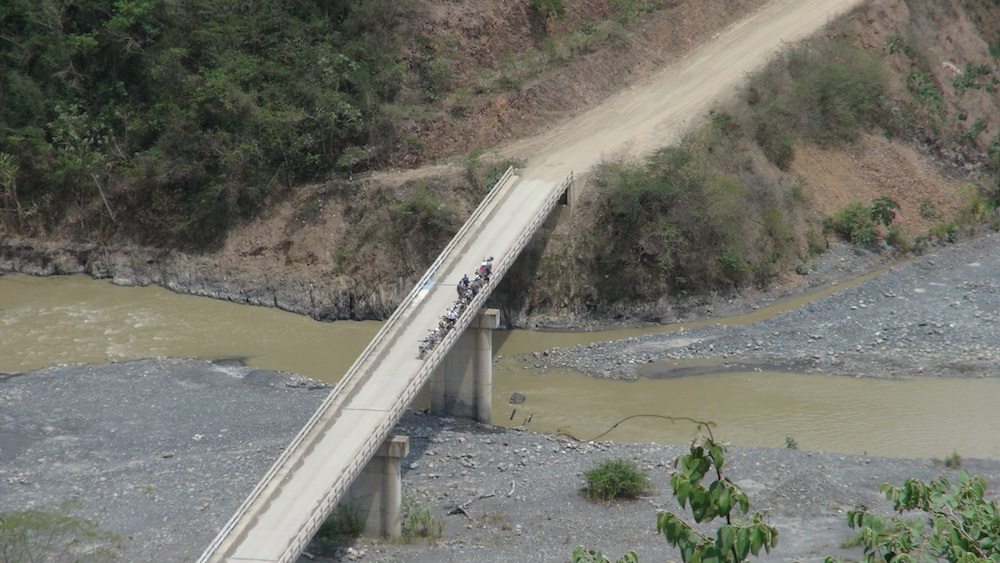
Our ride out of Chulumani was punctuated with dust, dust and more dust. Soft powder stuff which exploded and hung lazily in the air even if you looked at it wrong. Soon, we were on a side road and clipping through steep countryside. Small farm plots clung to steep slopes and coca leaves dried in the sun on soccer pitches. We descended and climbed in and out of several river valleys and ended in the town of Coroico just in time for lunch.
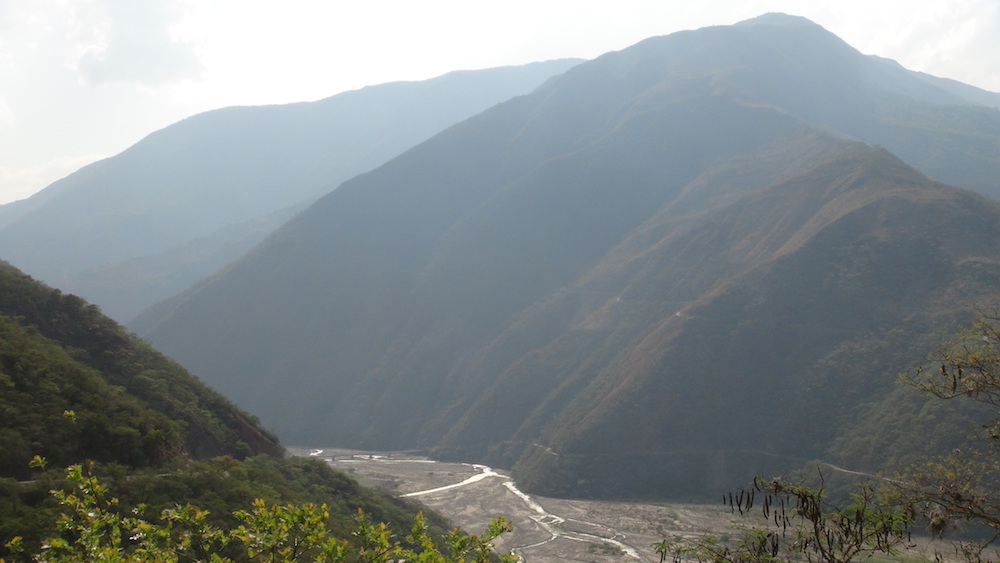
That afternoon, most of the riders preferred to rest and catch up on internet communication. Some of us, however, were not finished with adrenaline, so we hitched a ride on the support truck and trailer to the bottom of the nearby valley and signed up for zip lining.
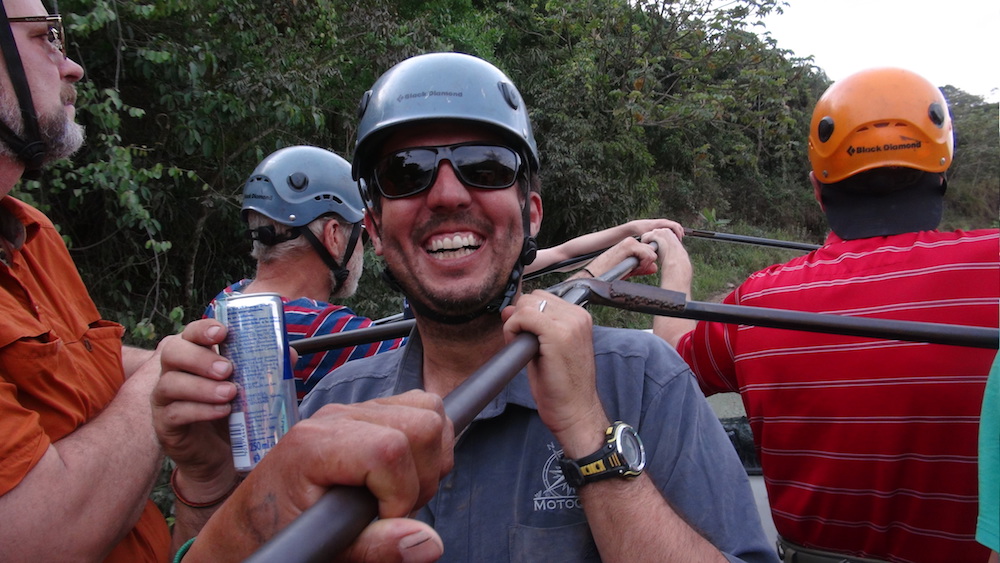
This company boasted the highest, longest and fastest zip lines in the world, so we all harnessed up, jumped in the back of their truck and climbed a little way up the Camino de la Muerte (Death Road) to the highest zip station.
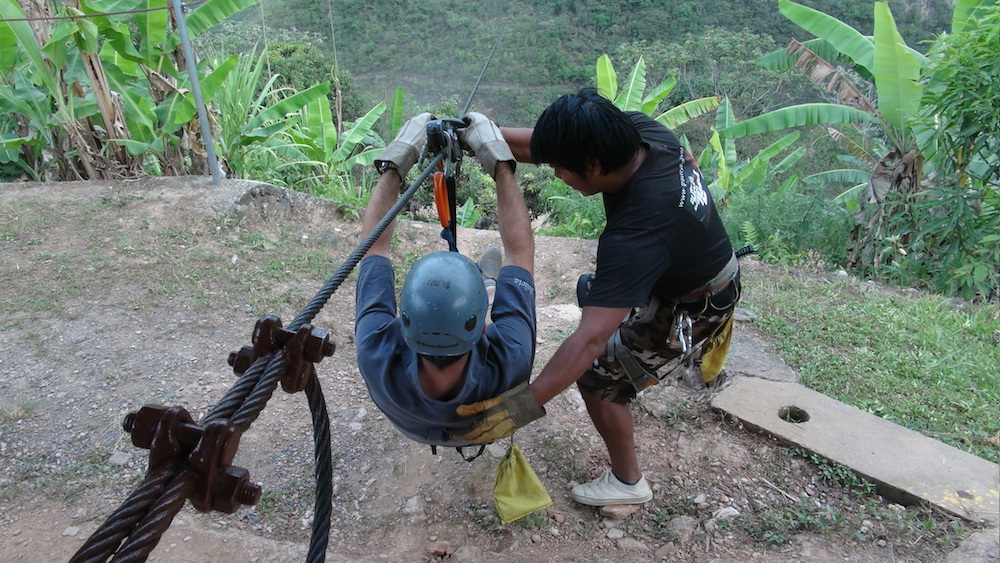
From there, we zipped across one valley, then another and then one more. Lots of laughs ensued especially when Walter, the tallest and heaviest of us, all came sailing in way over speed to the terminal and came to a blinding stop! A fun way to end the day!
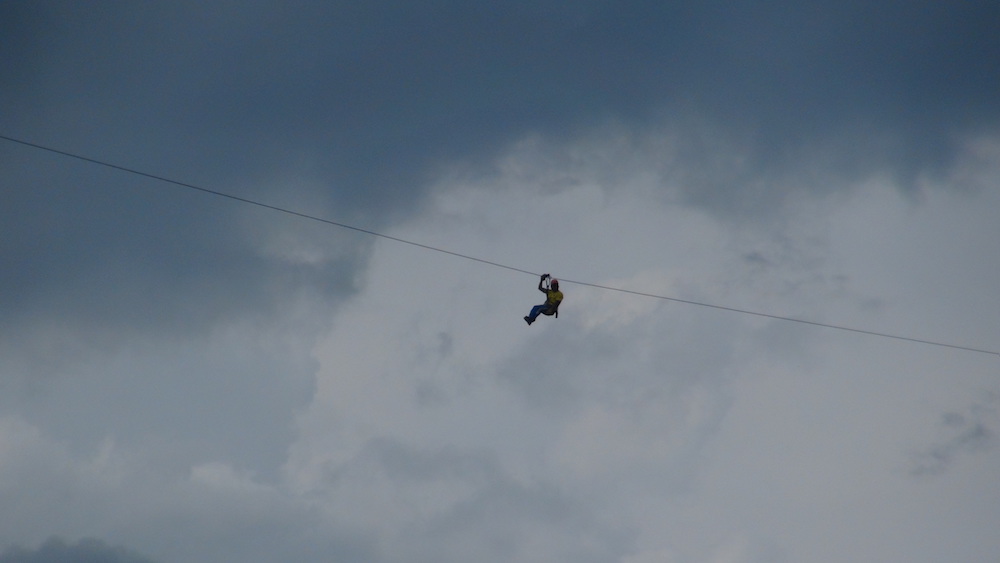
As the sun set, some of us gathered on a veranda overlooking the Andes and the famed Road of Death. We could see its sinuous mark on the mountain as it headed it way up the steep valley, far away…that would be tomorrow’s excitement.
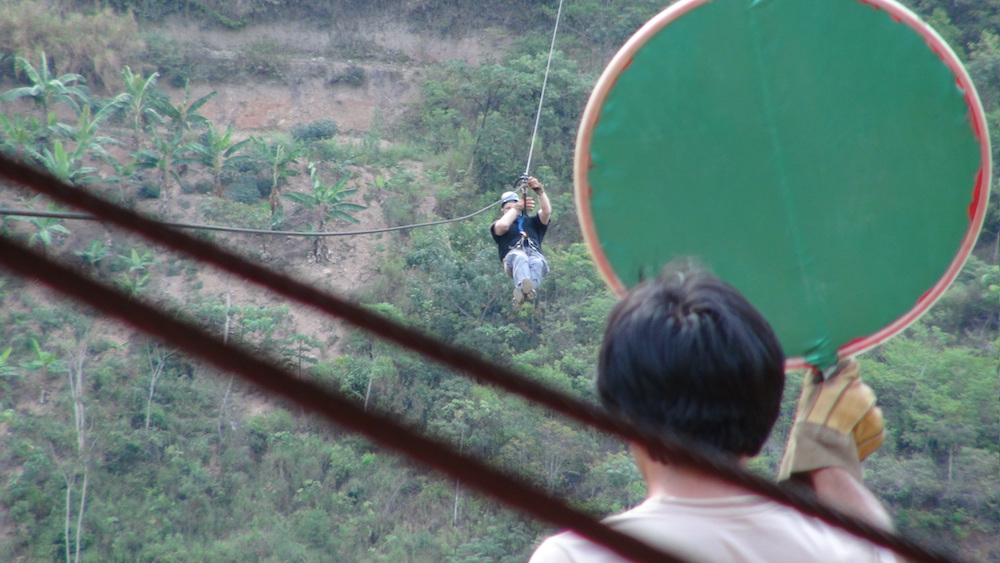
That night, Cory led us up a side street and into a Pub-style bar where an outdoor table was laid out for us complete with candles and friendly dogs. Pepper steak was their specialty and the wine was deliciously Bolivian.
Friday, November 19th — Coroico to La Paz
In its hey day, the Camino de la Muerte is said to by the most direct route between La Paz and the Amazon Basin. It is said that it claimed as many as 300 lives a year.
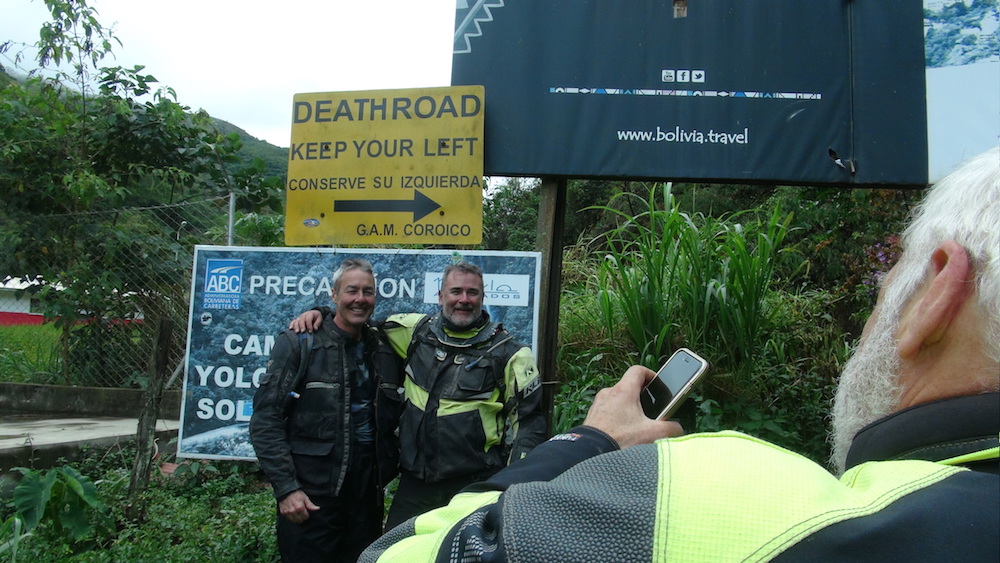
We were giddy as we posed by the “Death Road” sign before heading up. Traffic on the narrow dirt trail was left sided, giving those who were climbing up it the advantage of clinging to the mountain side.
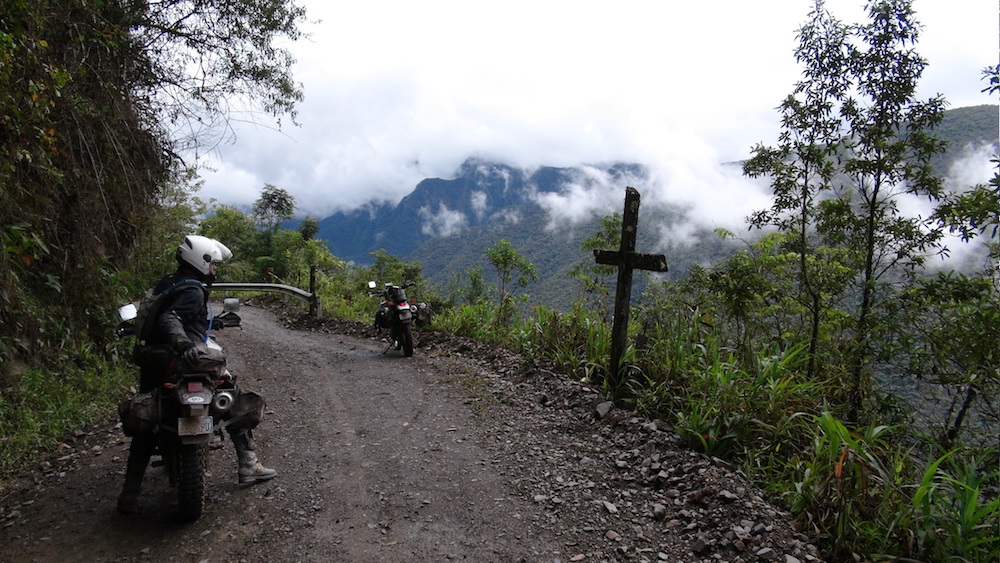
Of all the dangerous roads in the world, this one has the most notoriety. This was the reason most of us were here. Over the years, the main traffic had been diverted to a new road that winds down along a separate valley. Now, it was a tourist mecca, with deaths not coming from plummeting buses but from mountain bikers.
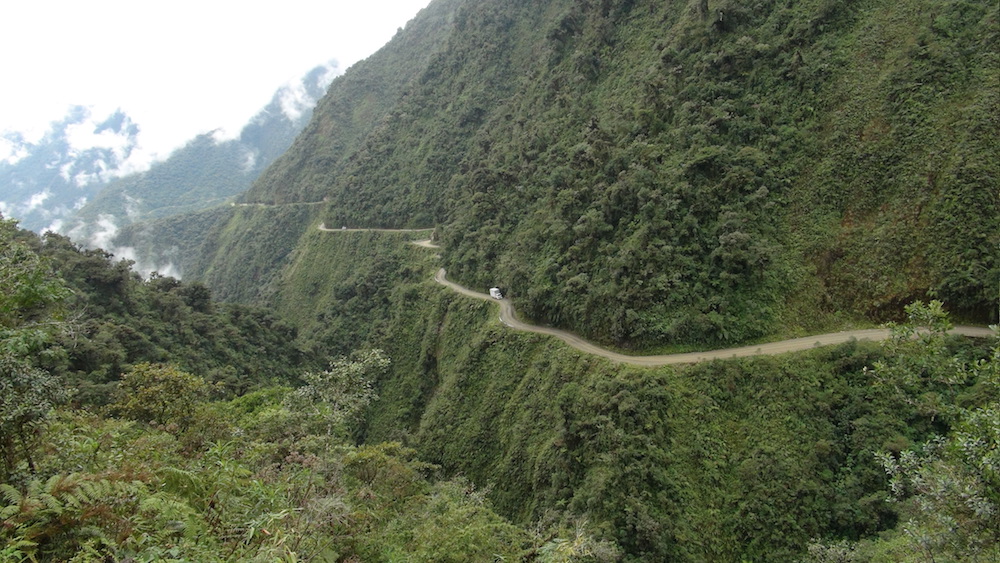
The road was the most scenic of all the ones we experienced so far. A lush, velvety canopy of trees carpeted the mountainsides across the valley and above and below us. The further we proceeded, the more spectacular it became. Soon waterfalls were cascading down sheer rock faces and at some points the road stared down thousands of feet. Little or no traffic met us on our way until at one point, swarms of mountain bikes chattered by. Nonetheless, the road kept up its incredible gripping beauty and wound its way precariously along, throwing in a waterfall onto the road once in awhile.
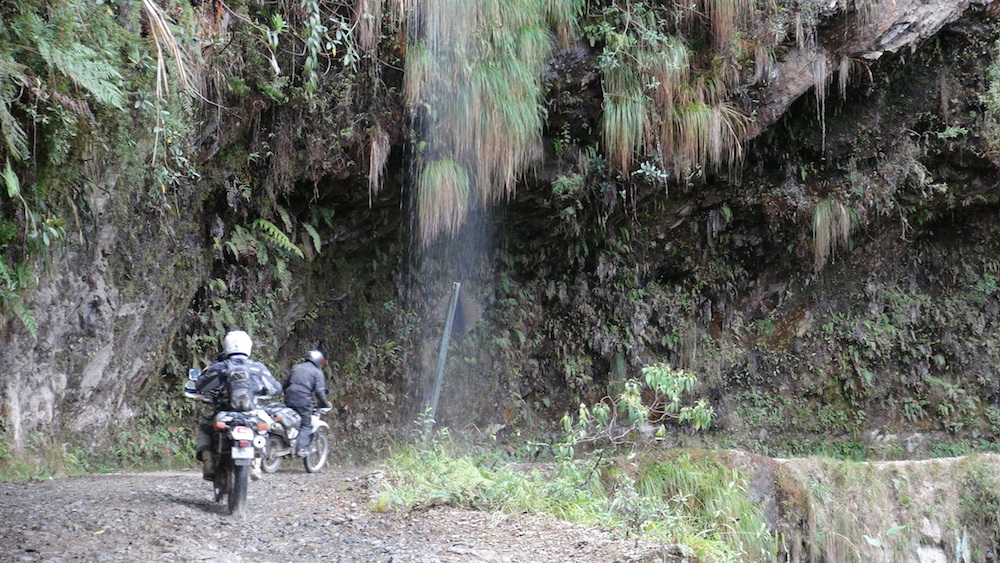
Too soon, it was over and we pulled onto the main highway and the right side of the road. The adventure did not stop there, it had only just begun. In the thick fog and drizzle of the Andes, Tim’s back tire went flat. That would be ten flats for the week! As we were fixing the tire, Leo and Ian approached out of the mist to report that Ian had nearly collided with a broken down truck. To miss the vehicle, he had clinched the front brake on the wet pavement and went down, skidding. At one point, he was sliding on his stomach, faster than his bike! I thought the Death Road would be the pinnacle of danger, but it turned out the foggy Andes were going to take the prize!
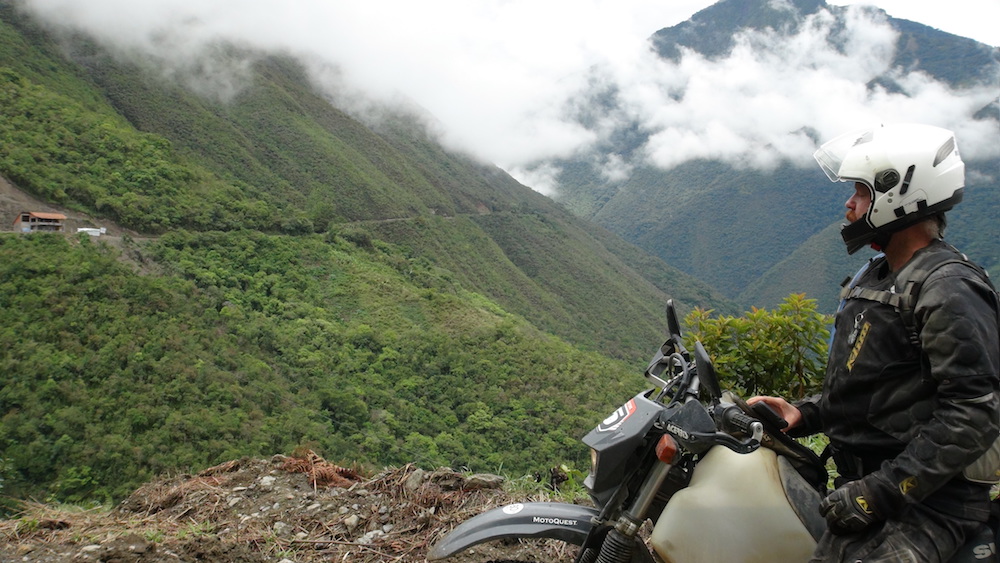
Up and over a 15,300 foot pass we went into the soup, in first and second gear. Our hands were starting to numb. The clouds finaly lifted and as we descended down, just miles from La Paz, Angry Ian was off the side of the road, dead in the water. His front sprocket had come loose and he was stranded, accompanied by a half eaten lunch and a playful puppy.
The last couple of miles into La Paz were hectic and the city looked out of place with its steep, dry slopes and sunken skyscrapers. However, at last, we pulled into the destination garage with all rider, all safe. What a relief!
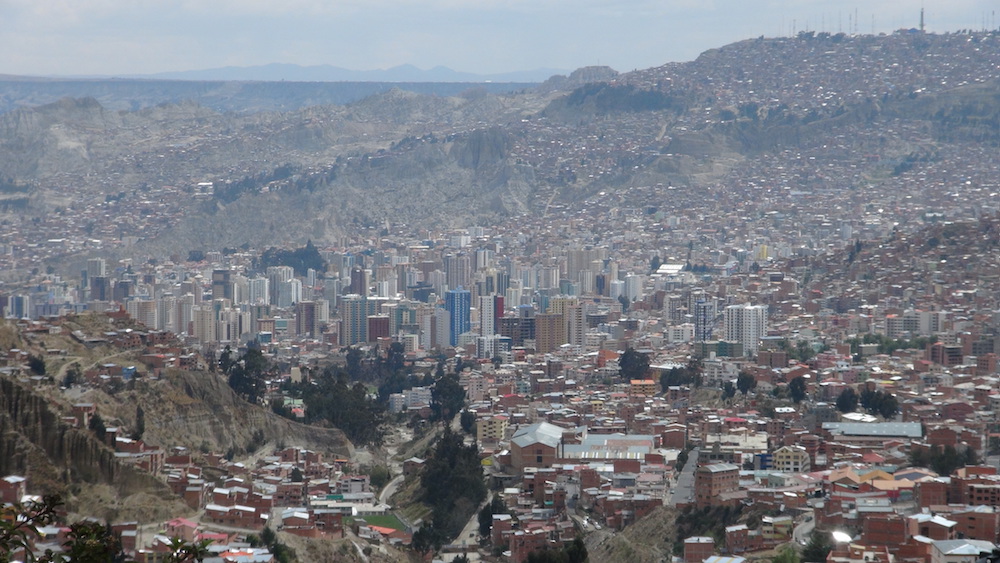
At the farewell dinner, we sat giggling about how long the trip seemed to take, though it was just 12 days long. We had seen dust, salt, death road, train cemeteries, lamas, backroads, silver mines and UNESCO cities.
In all, we had seen Bolivia, and the group was ecstatic to be all safe and sound, with yet another bucket list ride ticked off the list. It was a great group, with riders who were hearty enough to ride long days and easy going enough to sample off-the-grid style lodging. We had seen scenes that foreigners seldom do and taking a step back to ponder the trip, all we could do was smile.
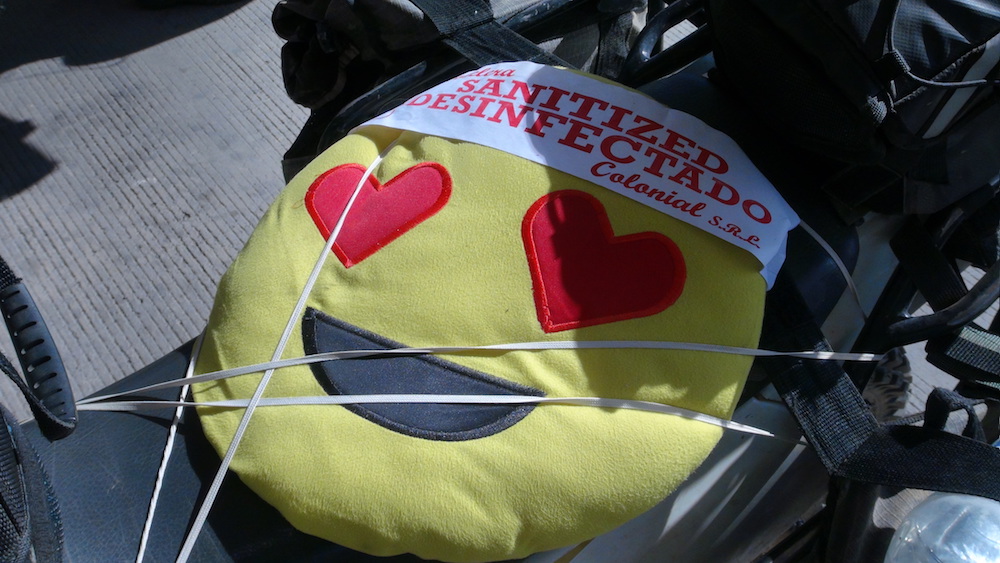
To be sure, Bolivia is not for everyone. It is rough, poor, dirty, and sometimes uncomfortable. The altitude, dust, smoke and dangerous traffic made this a ride that was sometimes not enjoyable, but always worthwhile. This was not a ride for everyone but those that were on the trip were truly adventurous and rolled with anything that was thrown their way. If Bolivia is on your bucket list, make sure that you are not in the habit of crying over spilled milk – this ride is a challenge, no doubt about it. The route we took sometimes deviated from the main roads, so off-road skills were an absolute necessity. The payoffs were the sights and sounds of the real Bolivia – something that will stay with us forever.

